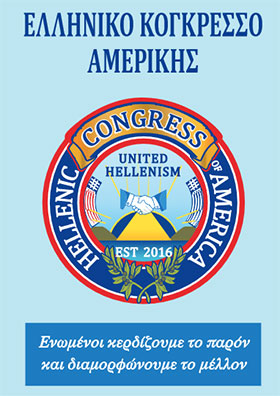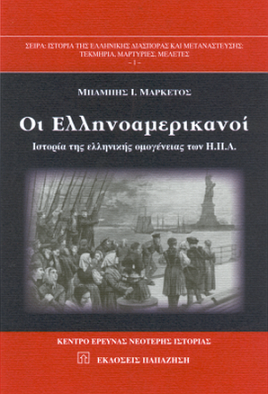Never Forget Kalavryta! -Neo-Nazis cross national borders as
By Charles J. Mouratides
Executive Director
CHI – Circle for Hellas & Israel
It was the 1943 Kalavryta massacre – civilians slaughtered by the Wehrmacht –that I thought about when I learned that the neo-Nazi party gained 7% of the popular vote in Greece’s recent national elections.
The neo-Nazi Golden Dawn party (Chrysi Avgi) actually won votes in the small, mountainous Kalavryta village, too. Had the larger political parties been able to form a Greek government this month, the neo-Nazis would have occupied 21 seats in the 300-member Parliament. That’s up from zero.
The lame response of European governments against neo-Nazism has contributed to the rise of extreme fascist groups in Europe. Amazing things are happening in the EU: A German publisher is preparing to issue an annotated (!) edition of Hitler’s Mein Kampf which is no more than Hitler’s personal philosophy and a boring, hate-filled diatribe.
Long-term government indifference has contributed to a worse development: Neo-Nazi groups on the continent are now cooperating with each other and coordinate activities across national borders. They evade legal or social pressure in one country by moving certain of their activities to another.
It is a Pan-European problem that demands an EU-wide response, but nothing is happening.
1. The basic problem is that neo-Nazi groups have grown in sophistication and are establishing EU-wide organizations across national borders. They employ a two-prong approach: One, they coordinate activities for special occasions. Two, they adopt ultranationalist agendas tailored to specific countries with issues important to broad population segments. Middle East immigrants is one issue that plays well on peoples fears.
Here is an example of coordination: Annually on November 11, Poland’s Independence Day, extremist Serbian group 1389 organizes a march through Warsaw carrying such slogans as “All of Poland will be White,” and “Enough of Jewish Occupation.”
In 2011, Serbian extremists in Warsaw also carried the slogan “Kosovo is Serbian,” a message of high patriotic value throughout Serbia. During the same period, march organizers scheduled a special meeting to advertise support for Serbia’s bid to regain Kosovo which became independent in 2008.
Organizer Misa Vacic stated, “No action (of the organization) has been carried out without the support of Czechs, Slovaks and Poles.”
Another occasion of cross-border planning are the so-called “doner kebab murders,” committed in German towns between 2000 and 2007. Police discovered in 2011 that the three neo-Nazis who killed 10 immigrants and committed other crimes, had received military-style training in Bulgaria.
2. A second EU problem is the systematic revision of history in the Balkans. WWII antifascist Partisan fighters – heralded under communism – are now downgraded by ultranationalists. In the place of partisans, the public has begun honoring Nazi collaborators.
In Croatia, primary examples are the Ustashe, WWII pro-Nazis. In Serbia, the Chetnik paramilitary group leader Draza Mihajlovic, a collaborator executed in 1946 by partisans, has been rehabilitated. It is also reported that some government buildings display photos of Milan Nedic, a collaborator whom Hitler had appointed prime minister in Serbia.
In 2009, delegates from 46 countries gathered in the Czech concentration camp Terezin, and declared their commitment to return property seized from Jewish families in WWII. Serbia refused to sign the pledge.
3. A third trend, helping Pan-European neo-Nazi formations, is the creation of new Nazi symbols. Wearing the keffiyeh scarf is one. The use of cryptic numerals is another symbol. Numeral 88, for instance, refers to the eighth letter of the Latin alphabet to indicate HH (Heil Hitler.)
Disturbing as this Balkan-wide organized formation of neo-Nazis is, it is equally disturbing that the EU remains lethargic.
What to do? The EU can require that children be appropriately educated in Balkan countries seeking EU membership, and government buildings should take down proudly displayed photographs of killers.
EU can demystify both original and new Nazi symbols. It can educate the public on Nazi history and its tremendous cost in human life and treasure. EU can also create an immigration policy that is just to nationals, humane to immigrants, and relates to specific regions; one that enforces restrictions or provides relief where excesses are detected.
In the meantime, as Greeks go to voting stations in the June 17 election, they must never forget the men, women, and children slaughtered by the Nazis at Kalavryta. The bayoneting of pregnant women and of babies in their cribs at Distomo. And Kommeno. And Kefalonia. And, and… And never forget the nearly 50,000 victims from Thessaloniki whose only “crime” was their religion.
*Photo: The Nazis torch Kalavryta homes during 1943 massacre










Σχόλια Facebook